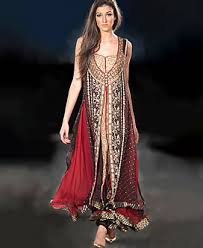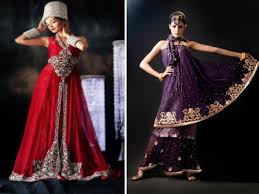Source (Google.com.pk)
Pakistani Outfits Biography












Pakistani Outfits Biography
Needle Impression is a popular and renowned fashion brand for Pakistani women. Every year, Needle Impressinos showcased stylish dresses along with attractive colours and unique designs. Recently, Needle Impressions launched latest and stunning outfits for spring 2012. This spring collection 2012 included the beautiful embroidered frocks and elegant A-line shirts along with trousers as well as churidar pajamas. Each dress in this collection is very attractive and classy. Let’s have a quick look at the stunning and elegant outfits for spring 2012 by Needle Impressions. In additionally, this spring is perfect for every occasion such as birthday party, wedding ceremony and any special occasion. Moreover, this spring collection 2012 includes best and high quality fabric and prices are very affordable. In the final conclusion we can say that all the dresses in Spring collection 2012 are elegant, stunning and gorgeous. Lets Have a look at Stunning Outfits By Needle Impressions For Spring 2012.
The society and culture of Pakistan (Urdu: ثقافت پاکستان) comprises numerous diverse cultures and ethnic groups: the Punjabis, Kashmiris, Sindhis in east, Muhajirs, Makrani in the south; Baloch and Pashtun in the west; and the ancient Dardic, Wakhi, and Burusho communities in the north. These Pakistani cultures have been greatly influenced by many of the surrounding countries' cultures, such as the Turkic peoples, Persian, Arab, and other South Asian ethnic groups of the Subcontinent, Central Asia and the Middle East.
In ancient times, Pakistan was a major cultural hub. Many cultural practices and great monuments have been inherited from the time of the ancient rulers of the region. One of the greatest cultural influences was that of the Persian Empire, of which Pakistan was a part. In fact, the Pakistani satraps were at one time the richest and most productive of the massive Persian Empire. Other key influences include the Afghan Empire, Mughal Empire and later, the short-lived but influential, the British Empire.
Pakistan has a cultural and ethnic background going back to the Indus Valley Civilization, which existed from 2800–1800 B.C., and was remarkable for its ordered cities, advanced sanitation, excellent roads, and uniquely structured society. Pakistan has been invaded many times in the past, and has been occupied and settled by many different peoples, each of whom have left their imprint on the current inhabitants of the country. Some of the largest groups were the Proto-Indo-Aryans, of which Sindhis and Punjabis descend from and later Iranic peoples which the Baloch and Pashtuns descend from. Other less significant ones include the Greeks, Scythians, Persians, White Huns, Arabs, Turks, Mongols, Buddhists, and other Eurasian groups, up to and including the British, who left in the late 1940s.
The region has formed a distinct cultural unit within the main cultural complex of South Asia, the Middle East and Central Asia from the earliest times, and is analogous to Turkey's position in Eurasia. There are differences in culture among the different ethnic groups in matters such as dress, food, and religion, especially where pre-Islamic customs differ from Islamic practices. Their cultural origins also reveal influences from far afield, including Tibet, Nepal, India, and eastern Afghanistan. All groups show varying degrees of influence from Persia, Turkestan and Hellenistic Greece. Pakistan was the first region of South Asia to receive the full impact of Islam and has developed a distinct Islamic identity, historically different from areas further west.
The society and culture of Pakistan (Urdu: ثقافت پاکستان) comprises numerous diverse cultures and ethnic groups: the Punjabis, Kashmiris, Sindhis in east, Muhajirs, Makrani in the south; Baloch and Pashtun in the west; and the ancient Dardic, Wakhi, and Burusho communities in the north. These Pakistani cultures have been greatly influenced by many of the surrounding countries' cultures, such as the Turkic peoples, Persian, Arab, and other South Asian ethnic groups of the Subcontinent, Central Asia and the Middle East.
In ancient times, Pakistan was a major cultural hub. Many cultural practices and great monuments have been inherited from the time of the ancient rulers of the region. One of the greatest cultural influences was that of the Persian Empire, of which Pakistan was a part. In fact, the Pakistani satraps were at one time the richest and most productive of the massive Persian Empire. Other key influences include the Afghan Empire, Mughal Empire and later, the short-lived but influential, the British Empire.
Pakistan has a cultural and ethnic background going back to the Indus Valley Civilization, which existed from 2800–1800 B.C., and was remarkable for its ordered cities, advanced sanitation, excellent roads, and uniquely structured society. Pakistan has been invaded many times in the past, and has been occupied and settled by many different peoples, each of whom have left their imprint on the current inhabitants of the country. Some of the largest groups were the Proto-Indo-Aryans, of which Sindhis and Punjabis descend from and later Iranic peoples which the Baloch and Pashtuns descend from. Other less significant ones include the Greeks, Scythians, Persians, White Huns, Arabs, Turks, Mongols, Buddhists, and other Eurasian groups, up to and including the British, who left in the late 1940s.
The region has formed a distinct cultural unit within the main cultural complex of South Asia, the Middle East and Central Asia from the earliest times, and is analogous to Turkey's position in Eurasia. There are differences in culture among the different ethnic groups in matters such as dress, food, and religion, especially where pre-Islamic customs differ from Islamic practices. Their cultural origins also reveal influences from far afield, including Tibet, Nepal, India, and eastern Afghanistan. All groups show varying degrees of influence from Persia, Turkestan and Hellenistic Greece. Pakistan was the first region of South Asia to receive the full impact of Islam and has developed a distinct Islamic identity, historically different from areas further west.
Pakistani Outfits
Pakistani Outfits
Pakistani Outfits
Pakistani Outfits
Pakistani Outfits
Pakistani Outfits
Pakistani Outfits
Pakistani Outfits
Pakistani Outfits
Pakistani Outfits
Pakistani Outfits
Pakistani Outfits
Pakistani Outfits
No comments:
Post a Comment